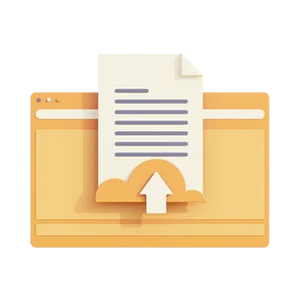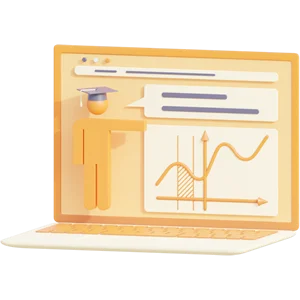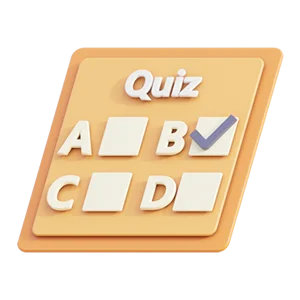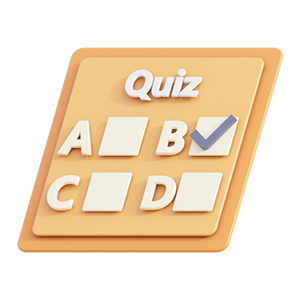Studiebot antwoord
Stel een vraag ›Maak een oefenexamen van de volgende tekst: CLUSTER 1: INTRODUCTION
Digital marketing = any marketing methods conducted through electronic devices which utilize some form of a computer. This includes online marketing efforts conducted on the internet
Digital advertising = advertising that employs digital technology (hardware, soft-ware, and communication technologies) in the execution of marketing plans
DIGITAL MARKETING (R)EVOLUTION
STARTING FROM A VISIONARY QUOTE
In the future, there will be computers everywhere and we will not notice their presence. They will just be there, seamlessly integrated into the world at large (Mark Weiser)
Concept of calm computing = X and ubiquitous computing = computers are becoming part of our everyday life, not aware that were surrounded by electronics
Example: sensor that changes the hardness of a babys mattress whilst sleeping
TO A MARKETING (R)EVOLUTION
Technological innovations stress the critical importance of moving modern marketing into the digital age.
The evolution of advertising:
- First clickable web ad was a banner It was an advertisement for AT&T on HotWired.com in 1994, and people clicked on it like crazy 44% Click trough rate
Part of AT&Ts larger You Will campaign, which included a series of television commercials featuring predicted scenes from an internet-enabled futurein many cases quite accurately
- Email marketing birth of SPAM (70s)
- Pop-up ads attract peoples attention and directed them to a website, intrusive & annoying countered by pop-up blockers (97)
- Streaming services like Netflix
o A cheaper, ad-supported Netflix tier is on the way:
o Netflix will reportedly launch a cheaper ad-supported tier for its streaming platform at the start of November as the company tries to stem the loss of more than 1 million subscribers in 2022.
- AR & VR in advertising example: scan your room and put furniture in it through your phone (ikea)
- AI advertising Rodgers: advertising as brand communication that uses a range of machine functions that learn to carry out tasks with intent to persuade with input by humans, machines, or both
o Examples: speech recognition, image identification, semantic search, machine learning, natural language processing, deep learning
- Search advertising SEO (search engine optimization), pay per click (PPC) model, Google launched ad-words (2000s)
- (Hyper-) targeted ads & programmatic advertising segmentation, ads that are specifically for you, based on your interests
o Targeted ads in social media
o Programmatic advertising connects publishers and brands, to reach internet users by purchasing advertising space (by using cookies & DSPs we get personal info that influences what advertisement a person will see)
- Native advertising paid advertising, butt with the look and feel of the media it appears on, its disguised so that they dont disrupt the viewers attention (2010)
The old mindset of marketing products by creating expensive campaigns around classic advertising media is becoming obsolete
Classic advertising vehicles can still play an important role
But: they must be integrated with newer ICT vehicles that make up our digital world!
A new digital mindset is needed!
DIGITAL MARKETING: A WHOLE NEW WORLD
1. DIGITAL MARKETING = DRIVEN BY (CUSTOMER AND EMPLOYEE) TECHNOLOGY ACCEPTENCE
Digital disruption = major marketplace changes or sector transformation following the application of technology, Examples:
- 1995: Amazon disrupted the traditional book-selling market
- 1997: Netflix disrupted the traditional video-hire market
- 2008: Airbnb disrupted the accommodation sector
- 2009: Uber disrupted taxi services
- 2022? Metaverse is a new way of thinking how we see our lives 2022, virtual spaces
TECHNOLOGY ACCEPTANCE MODEL (TAM):
In 1898, acceptance of technology was a major challenge , computers were introduces in the workplace
- Difficulties in comprehending benefits
- Difficult to persuade companies to adopt new technologies (e.g., email)
Davis (1989): can we predict system usage? Testing the adoption of new technology based on positive attitudes towards the perceived client benefit and the user experience = TAM considers positive attitudes towards perceived usefulness and perceived ease of use)
The way people accepts technology depends on:
Model has been extended multiple times to make it more relevant to todays environment:
TAM 2: + social influence and cognitive instrumental processes (Venkatesh & Davis, 2000; Venkatesh, 2000)
Unified Theory of Acceptance and Use of Technology (UTAUT): + social influence and facilitating conditions (Venkatesh et al., 2003)
TAM 3, applied to e-commerce: + effects of trust and perceived risk (Venkatesh & Bala, 2008)
TAM is relevant for marketeers: we all differ in how much we understand/accept digital media
marketeers make reflections of differences in personal values and world view
There is no such thing as one profile for a typical digital marketeer
Different channels, customers, skill sets, programs used,
2. CAPABILITY TO BE MEASURED
Digital footprint = large quantity of information that may be used as input for marketing research
Machine learning (ML) can help understand historic information and aid in the planning of future operations
BIG DATA
Has a range of different sources:
- Business sales records
- Results of research (e.g. Nielsen)
- Social media news feeds
- Logs of click streams on a web page or mobile app,
Large data sets that computers could barely handle in the past 3Vs of how big data was:
- Volume - breadth and depth of data, Not only amount but wideness of data, how many information you have of a person
- Variety - Different types of data
1) Structured: data you can put in columns and rows
2) Unstructured: no real definition of how you can use it for examples photographs, videos, not structurable in any means
3) Semi-structured: can be structured but isnt in se, you need programs to structure it
- Velocity - speed of data, how fast you can get it
- Veracity: The truthfulness of the data, how ethical it is, is it trustworthy?
- Value: Very interesting or not so valuable
- Variability: Is it data that can be used easily or not?
How does it work? An example: Social media (incl. Facebook, Twitter, Google) gather data based on social media use:
- Current interests, lifestyle changes, keyword searches (e.g. organic diet, new car purchase, family vacation, etc.)
- Brand loyalty (e.g. brand loyal vs. brand agnostic)
- Shopping preferences (e.g. in-store, online research, mobile interactive, sales and coupons, shopping list or spontaneous, experimental or fixed choice)
- Digital personas (e.g. profiles of online behavior, click data, device preferences)
This data fed back to data specialists
Can inform market research companies (e.g. Nielsen: https://www.nielsen.com/be/en/) and marketers, who want to target the right audience with the right message
Argenta: Generating big data with for example Cake-app
MARKETING IN THE DIGITAL AGE
However, digital data collection also has a darker side:
- Information overload and chronic distraction (advertising constantly around us)
- The threat of privacy invasion (your data is used, being watched/intruded)
- Information control by global technology giants (they have a mass data at their disposal, sell this)
- Threat of gathering data with vulnerable groups (data of children such as address)
- Threat of flawed, dishonest, fake data
Also a trend in digital marketing = more regulation not only for privacy/data issues but also for deontological code for influencers
Which problems?
Trade and exchange of illegal goods, services and content online
Manipulative misuse of algorithms (disinformation, harmful purposes) echo-room = when you only post of a certain idea, you will only see content related to this idea
Some large platforms control important ecosystems in the digital economy (monopolies). Have power to act as private rule-makers, resulting in unfair conditions for businesses using these platforms and less choice for consumers.
Digital Services Act (DSA) and the Digital Markets Act (DMA):
- European Commission
- On 25 March 2022 a political agreement was reached on the Digital Markets Act, and on 23 April 2022 on the Digital Services Act
- New EU rules to create a safer and more open digital space
- The DSA and DMA have two main goals:
1) to create a safer digital space in which the fundamental rights of all users of digital services are protected
2) to establish a level playing field to foster innovation, growth, and competitiveness, both in the European Single Market and globally.
Online privacy and legislation: Problems can arise (privacy issues for example) Can regulations help?
- General Data Protection Regulation (GDPR) = legal framework that sets guidelines for the collection and processing of personal information from individuals who live in the European Union (EU)
- State laws in USA (e.g., California Consumer Privacy Act (CCPA))
- Children's Online Privacy Protection Rule ("COPPA") = U.S. federal law designed to limit the collection and use of personal information about children by the operators of Internet services and Web sites.
3. AI IN DIGITAL MARKETING
AI = process of creating machines intelligent allows an object to perform correctly and predictably in its surroundings, f.e. Speech recognition, image identification, semantic search, machine learning (ML), natural language processing (NLP), deep learning,
Boddu et al. (2022) give 4 examples:
1) Marketing prediction: Ability to acquire more personal information more meaningful interaction
2) Chatbot advertising = a computer program, which simulates human language with the aid of a text- based dialogue system AI communicates with consumer, provide personalized service at scale
do people with different traits react differently to chatbot?
Regulatory focus theory: people are either promotion (go towards positive outcomes) or prevention (preventing negative outcomes) oriented privacy calculus theory = as people we weigh the benefits and downsides of giving away our privacy
- Promotion: highly value much personalized ads (brings benefits), especially those with low privacy concerns BUT If people are highly thinking about privacy concerns, than it doesnt really matter whether or not youre promotion or prevention oriented, they show the same purchase level
- Prevention: do not value personalized ads (see the dangers)
3) Email marketing: Artificial intelligence may produce tailored emails for each of the corporations subscribers, taking into account consumption, wish list items, and sites visited using personalized language
4) Advertisement refinement: E.g., Google and Facebook ads, using algorithms to measure our interests. TikTok Dynamic Showcase Ads: creates highly personalized content and target customers across devices
Four areas where AI is altering advertising practice and research:
1. Consumers experience of advertising in an AI-enabled world
Impact on interactions and conversations (virtual influencers, chatbots, )
How will these relationships be perceived (e.g., authenticity, fear of blur of reality and simulation)
Due to AI, Search advertising is fundamentally changing (although it was leading the landscape for years)
2. The truthfulness of AI-generated content and policy implications
Positive potential of AI in improving advertising effects >< concerns and questions about potential risks (what is creativity when AI does everything for you?)
What about fake news, deepfake videos etc.
Literacy and regulation needed?
3. Use of data and algorithms
Building AI models requires massive amounts of data
Need for algorithmic transparency
Algorithmic bias (e.g., issues because training data does not represent population)
4. Impact of an AI on the advertising industry
Will AI make the job of an advertiser obsolete? Or create new opportunities?
4. CUSTOMER ENGAGEMENT
Consumer power has risen: Communications have moved from business to consumer (B2C) to consumer to business (C2B) and consumer to consumer (C2C) Power does not only lie with businesses anymore
Empowering consumers: two-way communications and consumer-centric marketing (consumers becomes the centre of the attention f.e. AdBlock, skip ad, review with stars,)
Customers experience/journey changed = Process that customers take from searching for an item to concluding with a purchase:
- Can be online and offline
- Usually considered a linear process
- The customer journey is described in different ways/models
o Buyer journey
o Consumer (decision) journey
o Customer/user journey mapping
o Customer service encounter (ST)
o Customer experience (LT)
o Online customer service experience
o Path to purchase
o Service blueprinting
1. Consumer experience Model of Pham (2013): Digital marketing has introduced a whole new era for the consumer also for the consumer experience
starts with a desire acquisition use disposal
2. Online customer journey (Lemon & Verhoef)
Starts with previous experience current experience (prepurchase purchase postpurchase stage) future experience
Path to purchase: what has led to the purchase? identify most significant touchpoints (banner? Search ad on Google? Email (you left something in your shopping basket)?)
No longer seen as a linear process
How? Google data, cookies:
1) Session cookies = temporary and gets deleted after the session expires
2) Persistent cookies = permanent and lifespan of few months
Dark social = dark traffic: When a new customer arrives at your website, but you do not know how they heard of you the source of the visit. They are invisible on your analytics data and therefore cannot be attributed to a specific campaign How? Via private channels (offline WOM, messages, texts etc.)
3. Changes in customer journey acquisition phase:
Webrooming VS showrooming, social commerce
4. Changes in customer use/consumption phase: f.e. cloud computing = storing and accessing data and programs over the Internet instead of your computers hard drive
One effect of cloud computing: dematerialization = stop purchasing and owning material items and instead rent or share f.e. music: In the past: owning of vinyl records, cassette tapes, CDs <-> Today: rent music via monthly Spotify/Amazon/iTunes accounts
5. Liquid VS solid consumption:
- Solid consumption = consumption that is enduring, ownership based and tangible (Bardhi & Eckhardt, 2017) Traditional consumption
- Liquid consumption = consumption that is access-based and dematerialized (Bardhi & Eckhardt, 2017) Origin (and increasing popularity) in digital economy
. De oefenexamen moet geschreven zijn in de Nederlandse taal. Onderin staan de antwoorden. Het aantal vragen dat het oefenexamen moet bevatten is 5.
Stel een studievraag en wij proberen hem zo goed mogelijk te beantwoorden.
Stel een vraagEen studievraag stellen?
Stel een studievraag en wij proberen hem zo goed mogelijk te beantwoorden.
Stel een vraag Actie: ontvang 10% korting bij aankoop van 3 of meer items!
Actie: ontvang 10% korting bij aankoop van 3 of meer items!
Actie: ontvang 10% korting bij aankoop van 3 of meer items!







